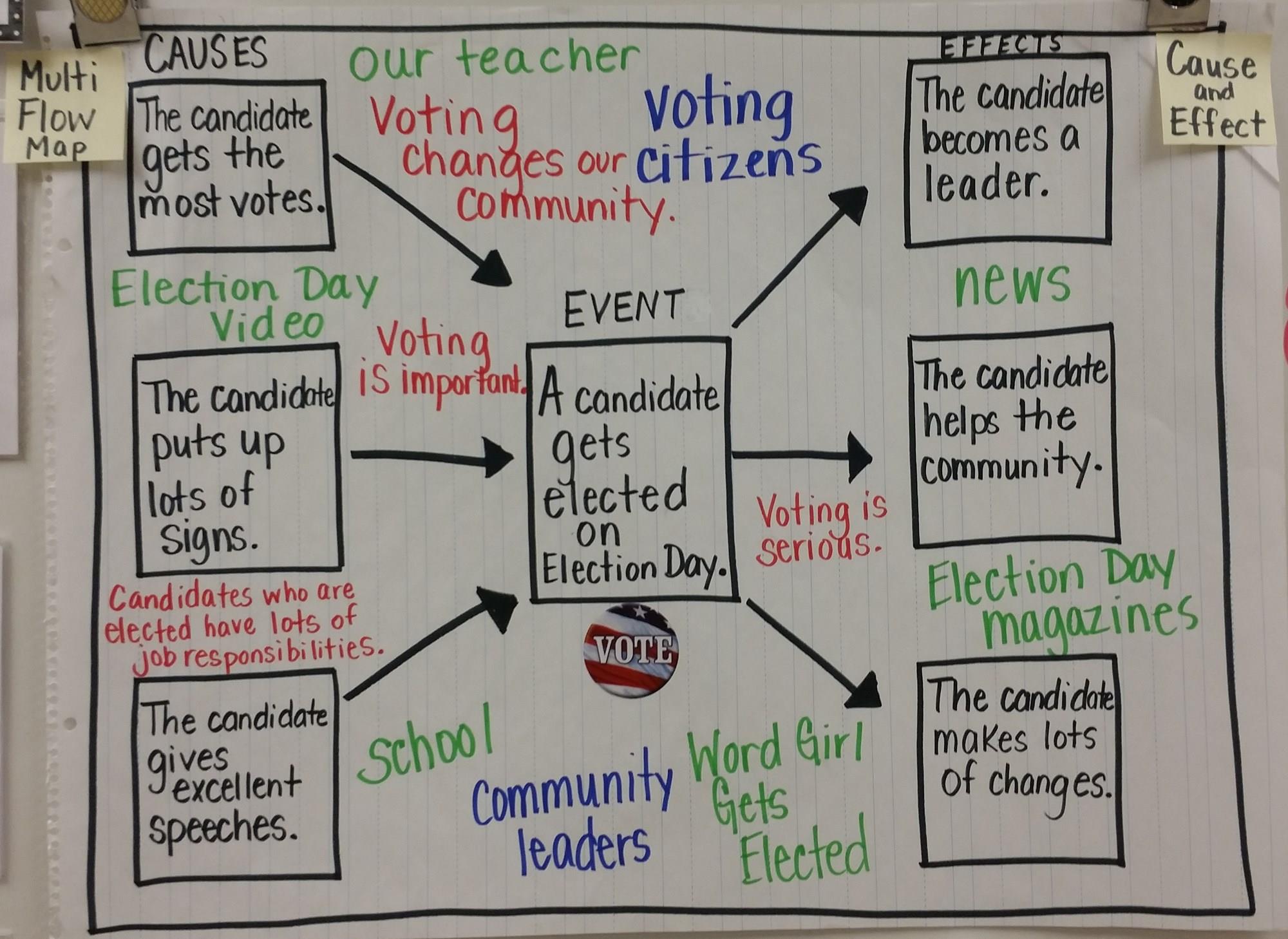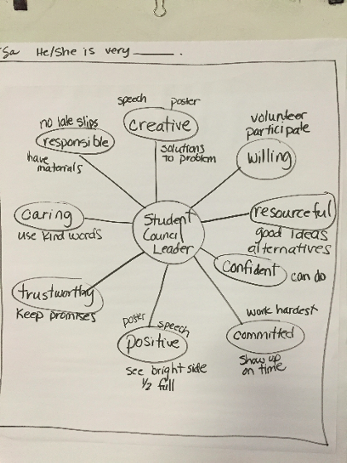Critical Thinking for Future Voters
OCTOBER 15, 2024
A healthy democracy depends on its citizens’ ability to process complex information and make informed decisions about issues and candidates. In other words, democracy demands critical thinking. Election season is a great time to help students develop the higher-order thinking skills they will need to be active, engaged citizens.
What Kind of Thinking Does Democracy Require?
In a democratic society, where individuals have the power to influence decisions through voting, activism, or civic engagement, critical thinking is indispensable for making informed choices. Critical thinking in the social studies classroom involves the disciplined process of analyzing information, questioning assumptions, and evaluating evidence before forming judgments.
Making voting decisions requires many different types of thinking.
- Defining and brainstorming: What is a democracy? What does it mean to be a voter? What are my biggest issues and priorities in this election?
- Describing: What leadership traits are important to me in an elected official? What qualities does this candidate display in their ads and campaign speeches?
- Sequencing: What are the steps in the election process? What steps will I need to follow in the voting booth? What is the proposed timeline for implementing a proposed action?
- Cause and effect: What are the potential outcomes of a proposed policy? What historical precedents led to this moment in history?
- Compare and contrast: How are two candidates different, and how are they the same? How do a candidate’s views on the issues I care about compare to my own? What are the differences and similarities between two policy proposals? How do the platforms of the two major political parties differ, and where do they overlap?
- Part and whole relationships: What are the different parts of the ballot? What are the parts of state and national government, and where do different candidates on my ballot fit?
- Classification: What are each candidate’s views on various issues (e.g., healthcare, education, the economy, etc.)? What do I know about each of the issues on my local ballot? Who are the different stakeholders that will be impacted by a proposed policy, and what are the concerns and priorities of each group?
- Analogies and relationships: How do functions of government relate to functions in the school? How do various political decisions and issues relate to my own life?
Teachers in Thinking Maps schools will recognize that each of these types of thinking correlates to one of the eight Thinking Maps. Thinking Maps can be used to help students understand how elections work and build the thinking skills they will need to be active citizens and informed voters. Students can use the visual Maps to gather and analyze information in a variety of ways.


Through the Frame of Reference, Thinking Maps also prepare students to consider probing questions such as:
- What is the source of this information?
- Is the information backed by credible evidence?
- What are the potential biases in the information?
- What is the point of view represented?
- What are the alternative points of view, and how might they change the way the information is presented?

For students in Thinking Maps schools, this kind of thinking and metacognition becomes second nature. Thinking Maps give students a concrete framework for collecting, analyzing, and evaluating information and developing their own thinking about candidates, issues, and the political process.
Tips for Teaching the Election
Teaching about elections can feel daunting, especially in today’s highly polarized political environment. Focusing on critical thinking and fact-based discussions can help to take the emotion out of political discourse. Here are some other tips.
- Stay non-partisan: It should go without saying, but of course, teachers should keep their own politics out of the classroom and facilitate fact-based, respectful discussion. Set and enforce ground rules for group activities.
- Teach the process, not just the politics: Teachers can focus on the mechanics of the electoral process—how voting works, the role of the electoral college, primaries, and general elections—without delving into partisan debates. This helps students understand the structure of democracy and their future role as voters.
- Start with the local: Local politics are often easier to understand and less polarizing than national politics. Local issues can also be more relatable and engaging, as students can see directly how an issue might impact their own community.
- Look to the past: Another way to get beyond today’s political climate is to get students engaged with historical debates and elections, using their critical thinking skills to decide how they might have voted in a previous era.
- Role-play different points of view: Have students research and present opposing sides of an issue, or use role-playing or debates where students must argue for a position they may not personally hold.
- Practice civic engagement: Most K-12 students are not yet old enough to vote in public elections, but students of all ages can get involved in the civic process at their own schools. Running and voting in student council elections, engaging in structured debates about school policies, writing letters to the editor, participating in service learning projects, and running mock elections are all great ways for students to build skills for civic engagement.
- Teach media and information literacy: These are some of the most critical skills students need to develop, especially with so much disinformation flooding the internet daily. (A problem that AI will only compound.) Students need to know how to question and evaluate sources, recognize bias, spot propaganda and manipulative language or statistics, and understand the difference between fact-based journalism and opinion.
For future voters, developing strong critical thinking skills is crucial. These skills ensure that when they step into the voting booth, they are not swayed by catchy slogans, social media trends, or biased headlines but instead can make decisions that align with their own values and the greater good of society.
Additional Election Resources for K-12 Teachers
These non-partisan resources have lesson plans and ideas for all grade levels.
- Kids Voting USA
- iCivics Election Headquarters
- PBS Election Central
- Facing History and Ourselves: Teaching Resources for US Elections
- Federal Depository Library Program: Elections and Voting Rights Activities
- WHRO: Raising Future Voters
- Democracy Classroom
Continue Reading
May 1, 2025
Artificial Intelligence (AI) is transforming education, from custom content in a minute to personalized learning. But with this surge in AI adoption comes a critical challenge for educators and students alike—the need to strengthen critical thinking skills. While AI offers immense potential, it cannot replace the human ability to think analytically, question assumptions, and make independent judgments.
January 15, 2025
Rather than simply memorizing facts, students with strong critical thinking skills learn how to connect ideas, identify patterns, and make informed decisions—key abilities in a rapidly changing world. These higher-order thinking skills at the core of critical thinking push students beyond rote learning to actively engage with content. In fact, closing the critical thinking gap is one of the most effective ways to accelerate learning for students who are struggling to learn grade-level content.
November 15, 2024
Critical thinking is a cornerstone of success in all aspects of life—not only in academics and on the job, but also in personal decision-making, relationships, and citizenship. And yet, critical thinking skills are rarely explicitly taught. Student-directed activities grounded in real-world problems and applications can help students develop the critical thinking skills they need for everyday life.
September 16, 2024
Why do we write? And why do we teach writing? In a world where Large Language Models (LLMs) are now ubiquitous, these questions have taken on a new urgency for students and teachers—and, indeed, for professional writers. Writing instruction in the AI era must focus on helping students discover and express their own unique ideas, voice, and purpose.